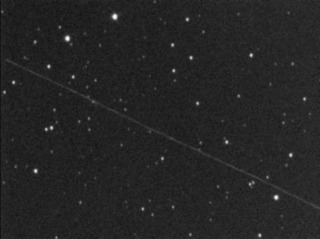
On Oct 12, 2017, a small asteroid zoomed past Earth just outside the range of our geosynchronous satellites.
First discovered in October 4, 2012 during it's last close approach. It will make several more approaches in the coming decades, but nothing as close as this one. Next closest approach will be in October 2050.
Size is estimated 15 meters, with a non-spheroid shape, and has a fast rotation with a rotational period of only 12 minutes and 14 seconds.
A single 60 second exposure as the asteroid zoomed across the field of view.
- Details
- Category: Solar System Objects
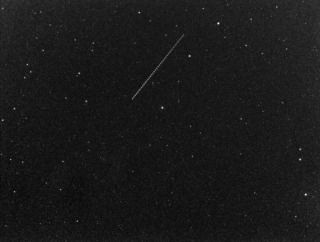
On the night of August 31, I imaged the asteroid Florence which made a relatively close pass of Earth. At a distance of 4.4 million miles, it is one of the larger near Earth asteroids. With a size of 2.7 miles, any collision would not be good news, but luckily no collisions are forecast for the foreseeable future. It won't come this close again until after the year 2500.
Stacked and merged image showing its path across the sky
- Details
- Category: Solar System Objects
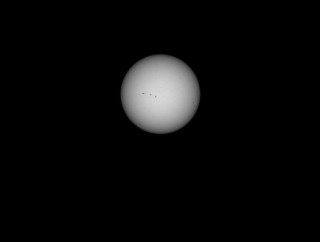
On August 21, 2017 this area experienced a partial eclipse of the Sun by the Moon. The following is a time lapse movie of that eclipse. A few in and out clouds, and a bit overexposed though.
- Details
- Category: Solar System Objects
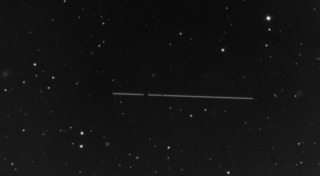
On April 19th asteroid 2014 JO25 made its closest approach to Earth at a distance of about 1 million miles. The asteroid was discovered in May 2014 by astronomers using the Catalina Sky survey. Radar imaging of the asteroid shows it to be a contact binary asteroid. Each segment is about 2000 feet, with a rotation period of about 3.5 hours.
The following images were made the day after closest approach and are a composite showing the movement of the asteroid for period of about 45 minutes. Image file is about 12 megabytes, click the read more to view.
- Details
- Category: Solar System Objects
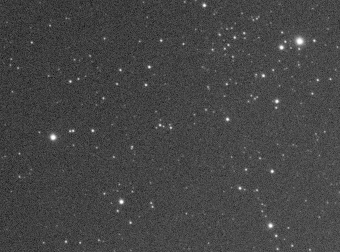
Asteroid Cohnia (almost) passes in front of a 13.5 magnitude star. I think I was just barely out of the occulation path. It was a good practice run, although much brighter objects would allow short exposures to determine the actual start and end times of the occulation. The asteroid at a magnitude of 14.7 and the star at 13.5 are much too dim for my setup for accurate timings.
Taken with the 80 mm refractor with Luminance filter over about 30 minutes of time.
- Details
- Category: Solar System Objects
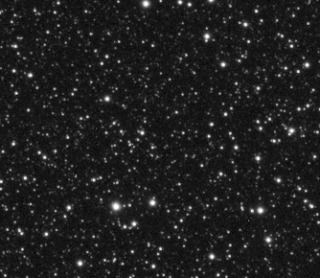
Pluto was discovered by Clyde Tombaugh in 1930, much in the same way this animated gif works. By blinking two different images taken at different times, any object that moves is apparent. Originally classified as a planet, but when other objects of similar sizes started being discovered, it was reclassified as a dwarf planet.
Even with the Hubble Space telescope, only broad areas of light and dark were discernible, it took the fly by of the New Horizons probe in July 2015 to provide our first real look at Pluto. Pluto has 5 known moons, the largest is Charon, and at half the diameter, and 1/8 the mass, the pair almost forms a binary planet system.
Pluto completes one orbit around the Sun in 248 years, and its orbit more eccentric, and moderately inclined relative to the other planets, and at its closest is inside the orbit of Neptune.
Pluto making it's way across the star fields in Sagittarius.
Images taken on Aug 03, 2016, and Aug 05, 2016 with the 80 mm refractor and mono ccd camera..
- Details
- Category: Solar System Objects